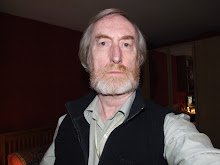I was quietly having breakfast when this ol' boy says to me: "is that a Scottish Flag on your van?" I was surprised that anyone could see it, since it's on the inside of a shaded window. I was not surprised he knew it was mine, since I expect he knew everyone else's.
His father had worked in Glasgow, Scotland, just before the first war. He emigrated here in 1923. He wanted to know a bit about Glasgow, Scotland.
Not one to let an audience slip away unenlightened, I launched into my 'Glasgow' spiel. They wanted to know where I'd been, and where I was going. I told them Iowa was next.
Then it would be Glasgow Illinois: and a man at the counter wheeled round and said "I'm from Glasgow Illinois". He'd been in Glasgow MO for a couple of years.
What do you think the odds of that are?
Then it was off to Howard County Courthouse in Fayette, about twelve miles away, hoping to find the original plat map, and the original deeds of transfer.
The courthouse is a very grand building in the middle of the main square. It appears to be symmetrical across both diagonals. I noticed this at the end of the day, when I couldn't find my car. Of course my first thought was that I'd missed a sign and been towed. Then I calmed down and realised that, if I'd been towed, they had replanted the whole garden to fool me. But I had to walk round all four sides to find it.
They did have court copies of the plat, and the deeds. These are, as you would expect from 1835, hand-written copies. They even had little squiggly circles to represent seals. And they didn't quite tell the story that is the accepted truth in Glasgow.
The deed which transferred the original town land from Earickson and Turner to the group, including them, who bought it (for $2758, by the way, on the 19th September 1835), listed the group, and there were sixteen, if you include the two sellers. And they didn't have equal shares. It was divided into twenty-seconds, and Glasgow, who was listed first, got three shares, as did Nicols and Moore "jointly". Johnson and Swinney got two each, and Earickson and Turner reserved three "to ourselves". All the rest got one.
2758 doesn't give a sensible result when divided by 22 (or by 19, if you take out the sellers' three shares), so there must have been some lump sum for expenses.
Anyway, what is even more interesting is that the deed was signed and sealed by no less than thirty (yes, THIRTY) people: the sixteen above, and fourteen of their wives. So, although the law, in those days, didn't write the wives out, history certainly did. Glasgow's wife did not sign.
They started selling lots nine days later, the deeds initially being denoted "Glasgow et al". In them, although all the names are listed, they describe themselves as "proprietors of the Glasgow Township", so they intended for it to be "Glasgow" from the word go.
My speculation is that Glasgow came to Chariton nearly twenty years before, and seeing the failure of Chariton and Monticello to expand and succeed, looked around and decided this was the place. And as he persuaded the movers and shakers of this, it became known as the "Glasgow Plan", "Glasgow Town", something like that. And he only had to assemble enough merchants, like himself, with money, and marry them up to the landowners, who had the land, but wanted money, and it could happen: it was called "Glasgow" because it was his idea, and he made it happen. But I'm just guessing. Sorry, did I say "guessing"? I mean "that's my thesis".




No comments:
Post a Comment